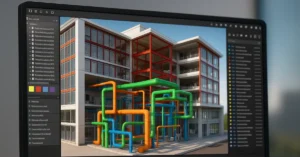Exploring the Depths of a Mastering Landscape Architecture

Embarking on the journey to earn a Master’s in Landscape Architecture is a profound exploration into the intricate fusion of art, ecology, and urban planning. This advanced degree opens doors to a world where design becomes a powerful tool for shaping outdoor spaces, promoting sustainability, and enhancing the quality of our built environments. In this comprehensive guide, we will delve into the multifaceted landscape of a Master’s in Landscape Architecture curriculum, uncovering the elements that make this educational journey both challenging and immensely rewarding.
Crafting Visionary Outdoor Spaces for a Sustainable Tomorrow
1. Foundations of Landscape Architecture: Nurturing the Roots
The curriculum begins by laying a robust foundation in the principles of landscape architecture. Courses in this phase cover the historical evolution of landscape design, theoretical frameworks, and fundamental design principles. Students immerse themselves in the rich tapestry of landscape history, understanding how various cultural and environmental factors have shaped outdoor spaces over time. This foundational knowledge becomes the fertile soil in which creative ideas take root.
2. Ecology and Environmental Systems: Navigating the Natural Landscape
Central to the ethos of landscape architecture is a deep understanding of ecology and environmental systems. Students engage in in-depth studies exploring ecosystems, plant life, and the intricate relationships between human activities and the natural world. This knowledge forms the backbone of sustainable landscape design, equipping future landscape architects to create spaces that harmonize with, rather than disrupt, the ecosystems they inhabit.
3. Design Studios: Where Creativity Blossoms
A hallmark of any reputable Master’s in Landscape Architecture program is the emphasis on design studios. These studios serve as laboratories where students bring their theoretical knowledge to life through hands-on projects. From conceptualizing urban parks to envisioning sustainable communities, these studios foster creativity and collaboration. Critiques and discussions within the studios cultivate a culture of exploration and innovation.
4. Urban Planning and Design: Shaping Livable Spaces
Landscape architects play a pivotal role in shaping the urban fabric. Courses in urban planning and design arm students with the skills to create functional and aesthetically pleasing outdoor spaces within the context of a larger community. They explore issues of public space, transportation planning, and the integration of green infrastructure into urban environments. The goal is to design landscapes that contribute to the overall well-being of communities.
5. Technology Integration: Tools of the Trade
In the digital age, mastery of technological tools is essential for landscape architects. Courses in technology integration cover the use of Geographic Information Systems (GIS), Computer-Aided Design (CAD), and Building Information Modeling (BIM) in landscape design. Students learn to leverage these tools to enhance the precision, efficiency, and visual communication of their design proposals.
6. Professional Practice: Bridging Theory and Reality
Understanding the practical aspects of professional practice is paramount. Courses in this domain cover project management, ethics, and the legal aspects of landscape architecture. Guest lectures by seasoned professionals provide insights into the real-world challenges and responsibilities that come with practicing in the field. This knowledge prepares students for a seamless transition from academia to the professional landscape.
7. Cultural and Social Factors: Designing for Diversity
A holistic landscape architect not only considers the physical environment but also acknowledges the cultural and social dimensions of design. Courses exploring these factors delve into topics such as cultural landscapes, social equity, and community engagement. Students learn to design spaces that resonate with diverse communities, fostering inclusivity and a sense of place.
8. Specialization Tracks: Tailoring the Expertise
Recognizing the diverse interests within the field, many Master’s programs offer specialization tracks. Whether it’s sustainable design, historic preservation, or urban ecology, these tracks allow students to tailor their education to align with their passions and career goals. Specialization courses deepen knowledge in specific areas, providing a well-rounded education that meets the demands of a dynamic profession.
9. Thesis Project: A Culmination of Mastery
The pinnacle of the Master’s in Landscape Architecture journey is the thesis project. This independent research project allows students to demonstrate their mastery of landscape architecture concepts, design principles, and research methodologies. It is an opportunity for students to contribute to the field, addressing contemporary challenges or proposing innovative solutions. The thesis project serves as a portfolio centerpiece, showcasing the depth of a student’s intellectual and creative capabilities.
In Conclusion: Nurturing Stewards of Nature
A Master’s in Landscape Architecture is more than an academic pursuit; it is a transformative journey that shapes individuals into stewards of nature, capable of envisioning and creating outdoor spaces that enrich our lives. Aspiring landscape architects emerge from these programs with a profound understanding of the intricate dance between human activities and the environment, armed with the skills to craft landscapes that stand the test of time. The canvas of nature awaits, and a Master’s in Landscape Architecture is the brush that empowers visionaries to paint a sustainable, vibrant, and harmonious future.
If you’re interested in learning more about architecture firms in Europe, check out this comprehensive list of the top 50 firms compiled by Archgyan. From innovative startups to long-established industry leaders, this list has it all. Take a look and discover some of the most inspiring and influential architecture firms in Europe today.
If you’re interested in architecture and want to learn more about this amazing field, subscribe to our podcast on youtube
For more SketchUp tutorials, head to https://www.sketchupguru.com










